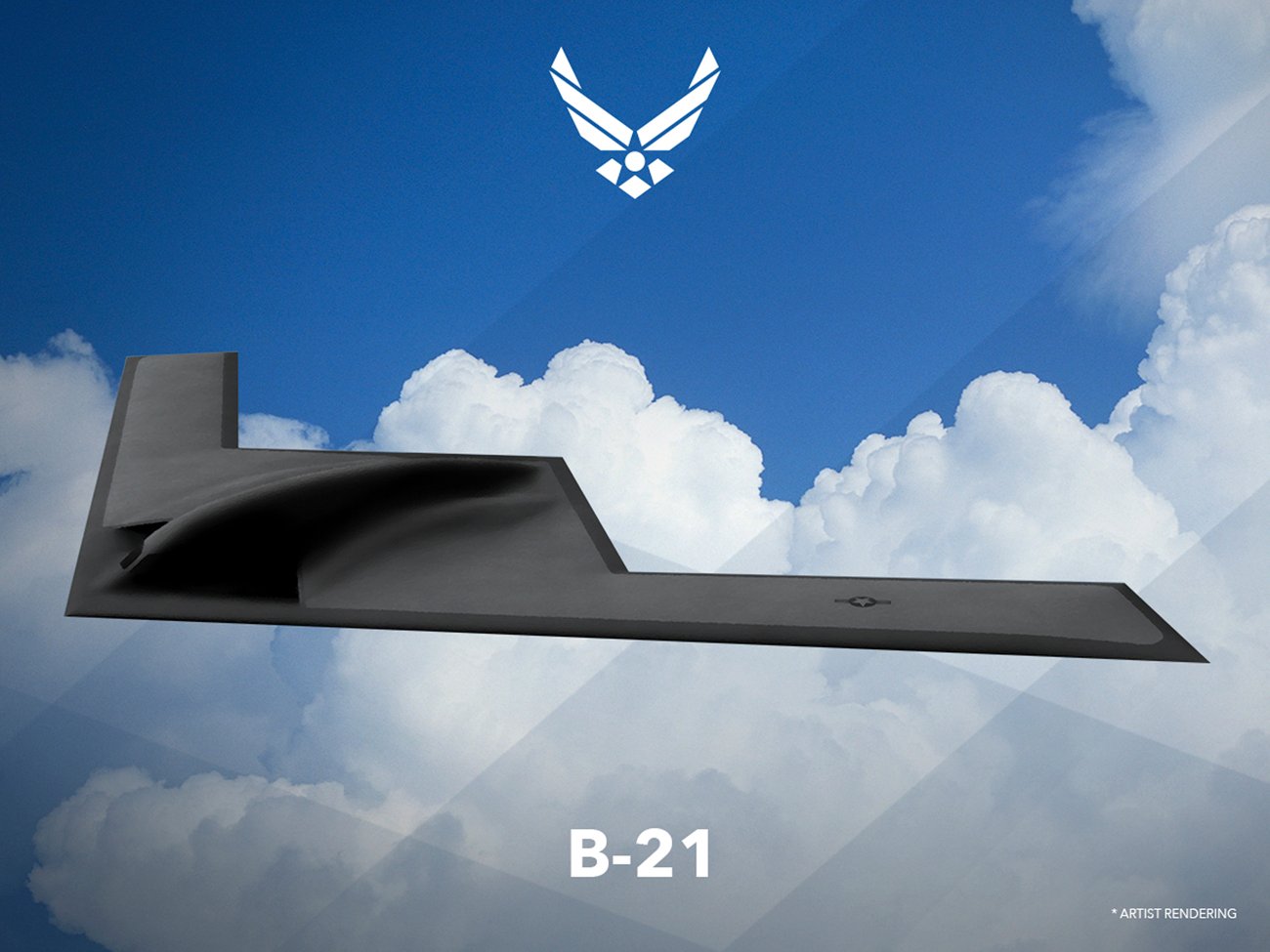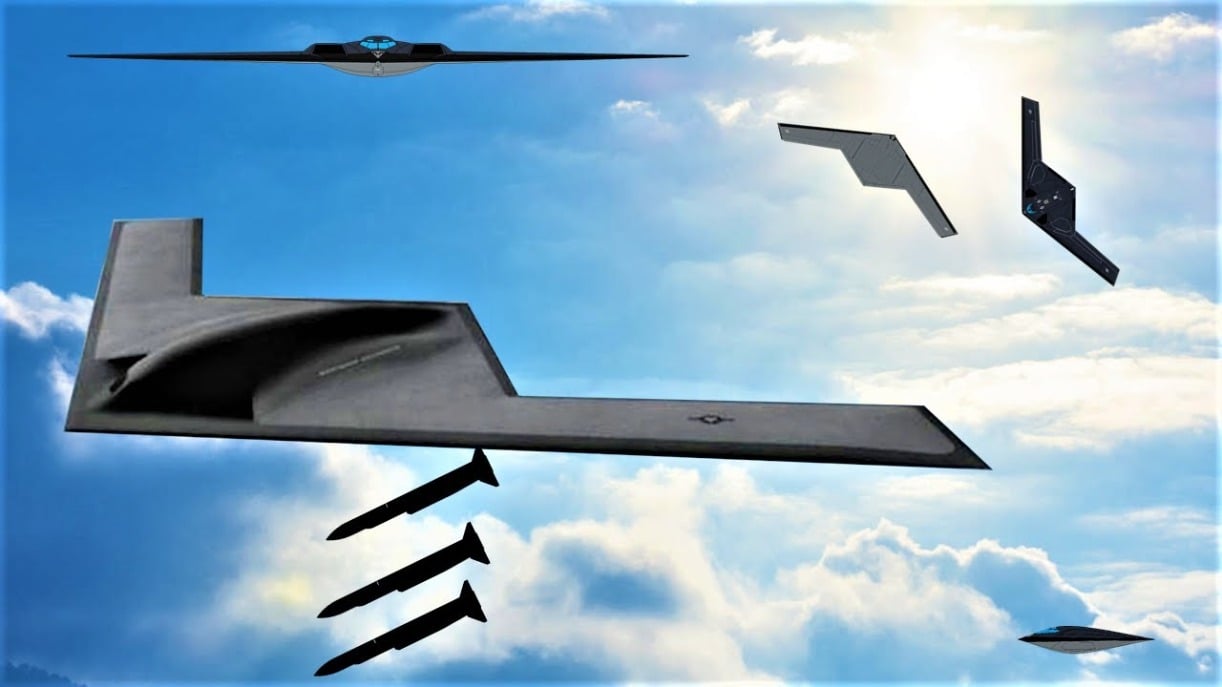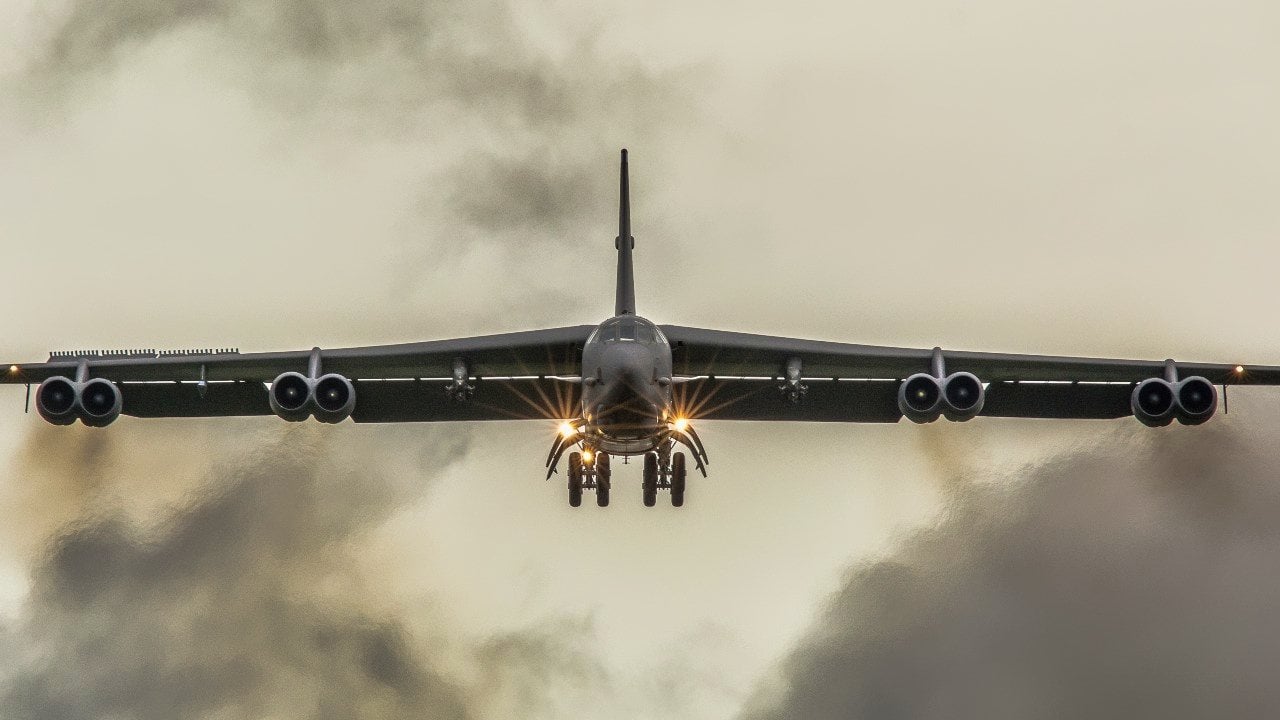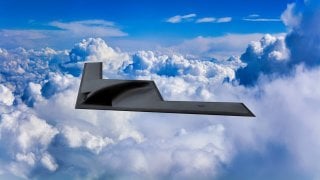The Air Force Might Really Need A Whopping 225 B-21 Raider Bombers
Despite its advanced capabilities, concerns are rising that the Air Force’s planned fleet of just 100 B-21 Raiders by decade’s end may be insufficient against growing threats from China and Russia. Experts like Col. Mark Gunzinger (Ret.) argue that the U.S. needs at least 225 Raiders to ensure readiness for future conflicts.
Summary and Key Points: The B-21 Raider, the U.S. Air Force's next-generation stealth bomber, is currently in low-rate initial production, with six prototypes under construction at Northrop Grumman's Palmdale facility.

-Designed to replace the aging B-1 Lancer and B-2 Spirit, the Raider is a critical component of America’s nuclear triad modernization.
-Despite its advanced capabilities, concerns are rising that the Air Force’s planned fleet of just 100 B-21 Raiders by decade’s end may be insufficient against growing threats from China and Russia. Experts like Col. Mark Gunzinger (Ret.) argue that the U.S. needs at least 225 Raiders to ensure readiness for future conflicts.
The B-21 Raider Bomber Numbers Game
There are currently at least six prototype Northrop Grumman B-21 Raider bombers in various stages of production at the aerospace firm's facility in Palmdale, California. Those test aircraft are being built on the same lines, using the same tools and processes that will build the eventual production Raiders. This approach has enabled production engineers and technicians to capture lessons learned and apply them directly to follow-on aircraft, driving home a focus on repeatability, producibility, and quality.
It was in November that the Raider – named for the 80 men who took part in the World War II “Doolittle Raid” on Tokyo in the spring of 1942 – took its maiden flight.
The Raider is one part of the U.S. Department of Defense's (DoD's) efforts to modernize all three legs of America’s nuclear triad – which also silo-launched nuclear ballistic missiles and submarine-launched warheads.
B-21 Raider: High Tech Bomber in Multiple Ways
In addition to building a B-21 with state-of-the-art technology and capabilities, Air Force officials have further emphasized the focus on containing costs while simultaneously allowing for maximum flexibility. The future backbone of the United States Air Force's bomber fleet has been noted for being designed with an open systems architecture that would enable rapid future capability integration to keep pace with the highly contested threat environment.
Some 8,000 employees of Northrop Grumman and various other defense contractors of all sizes, spread across 40 states, have been secretly building the Air Force's new stealth bomber. Great efforts have been taken to prevent China and other potential adversaries from gaining access to its technology.
Yet, it was reported last year that Air the Force is unlikely to have significant numbers of the B-21 in the coming decade. The Air Force expects to have between 24 and 30 operational Raiders in that timeframe.

According to Colonel Mark Gunzinger, United States Air Force (Retired), director of future concepts at the Mitchell Institute for Aerospace Studies, part of the Air & Space Forces Association industry group, warned last year that the current Department of Defense (DoD) plan is to have a bomber fleet of 133 aircraft by 2033 – lower even than the current 141 B-1, B-2 and B-52 Stratofortress bombers now in service, which is already smaller than at almost any time in the history of the Air Force.
Gunzinger called for the service to purchase upwards of 225 Raiders, which could operate along with the current fleet of B-1 Lancer, B-2 Spirit, and B-52 Stratofortress bombers now in service.
"More resources can buy back future risk and that’s what a more aggressive acquisition rate for the B-21 can do," Gunzinger told reporters in March ahead of the rollout of his Mitchell Institute report, "Understanding the B-21 Raider: America’s Deterrence Bomber."
Too Few New Stealth Bombers?
Advanced aircraft are apparently not cheaper by the dozen. Gunzinger noted that according to the DoD's unclassified report to Congress on aircraft inventory, the U.S. Air Force's acquisition raid for the B-21 could top out at around 13 per year. It could take longer than a decade for the service to reach its full inventory – and then only if there aren't issues including mishaps or supply chain woes.
Some critics have warned that the United States Air Force won't have enough aircraft – at least not soon enough – to take on China and Russia in an unthinkable future war. However, this is not a problem that is exclusive to the B-21 Raider.
The Air Force had originally envisioned a fleet of 132 Northrop Grumman B-2 Spirits, which had been developed in the Cold War for a conflict against the Soviet Union. Due to the project's considerable capital and operating costs – and as importantly the end of the Cold War – lawmakers shrank the program to just 21 aircraft. Following a 2008 crash, the Air Force has 20 in service, and those aircraft are expected to remain in service only until 2032.
The aging Rockwell B-1 Lancer and B-2 Spirit simply can't stay in service much longer, so the B-21 is really the only answer. It could operate with drones, which would be a serious force multiplier.

The Near-Peer Adversaries Aren't All That Near-Peer
It is also true that the United States is currently just one of three nations, along with Russia and China, operating long-range strategic bombers. Yet, Russia's fleet is aging and Moscow has struggled to produce even its older designs – like the Tupolev Tu-160 White Swan (NATO reporting name Blackjack) – in any significant number, while it still operates the propeller-driven Tupolev Tu-95 (NATO Reporting name Bear). The Kremlin continues to lose combat aircraft in Ukraine, and even when that war ends; it could take years for Russia to recover. In fact, it will likely become a regional power – albeit one with nuclear weapons.
China, which has ambitious plans for its People's Liberation Army Air Force (PLAAF) to become a major bomber power, is currently believed to be developing at least two strategic bombers that could reach Guam from its mainland. However, just as the People's Liberation Army Navy (PLAN) has become the largest naval force in the world, this needs to be put in context. The PLAN has more warships but far fewer carriers than the United States.
Even if Beijing does begin to build bombers, those won't likely roll off the assembly line any faster than the B-21, and it is unclear if the PLAAF will ever have the aircraft in any significant numbers. Yet, even if China can eventually outpace the United States – a big if – the U.S. Air Force still has the B-52, which could remain in service for decades to come.

Author Experience and Expertise: Peter Suciu
Peter Suciu is a Michigan-based writer. He has contributed to more than four dozen magazines, newspapers, and websites with over 3,200 published pieces over a twenty-year career in journalism. He regularly writes about military hardware, firearms history, cybersecurity, politics, and international affairs. Peter is also a Contributing Writer for Forbes and Clearance Jobs. You can follow him on Twitter: @PeterSuciu. You can email the author: [email protected].
All images are Creative Commons.


